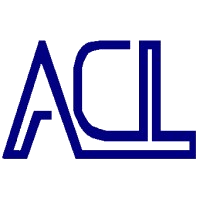2018 Hydrogen Generation Market Analysis by Generation, Application, Technology, Storage, and Region - Global Forecast to 2023 - ResearchAndMarkets.com
The "Hydrogen Generation Market by Generation, Application, Technology, Storage, and Region - Global Forecast to 2023" report has been added to ResearchAndMarkets.com's offering.
Increasing adoption of fuel cell vehicles is expected to drive the overall hydrogen generation market.
The hydrogen generation market is expected to grow from USD 135.5 billion in 2018 to USD 199.1 billion by 2023, at a Compound Annual Growth Rate (CAGR) of 8.0% from 2018 to 2023.
The hydrogen generation market is driven by various factors such as the increasing adoption of fuel cell vehicles in countries such as the US, China, and Japan and increasing demand for hydrogen in oil and gas refinery operations for producing cleaner fuels. However, rising investments in battery technology and safety concerns surrounding hydrogen operations can hinder the growth of the hydrogen generation market.
Merchant-based hydrogen generation is the fastest growing segment in the hydrogen generation market. The merchant-based hydrogen can be produced by water electrolysis and natural gas processes. This method of distributed hydrogen generation reduces the need for transportation of fuel and construction of new hydrogen generation infrastructure. Hence, merchant-based hydrogen generation is expected to grow at a high CAGR during the forecast period.
Steam reforming method of hydrogen generation, being a mature and proven technology, is expected to hold the largest market share during the forecast period. With the easy availability of raw materials such as natural gas and cost-effective operations of steam reforming technology, large refinery plants and industries rely on steam reforming for large-scale hydrogen generation operations.
The Asia Pacific market is expected to grow at the highest rate during the forecast period due to increasing refinery operations in countries such as China and India and the rising deployment of fuel cell vehicles in Japan and South Korea. The oil demand in Asia Pacific would grow by an average of 2% annually by 2023 with the region highly dependent on diesel and gasoline for transportation purposes.
Also, with major automotive manufacturers in the region such as Toyota and Honda investing in fuel cell electric vehicle technology and infrastructure, the demand for fuel cells is expected to peak in the coming years. The rising demand for fuel cells is expected to drive the Asia Pacific market.
Market Dynamics
Drivers
- Growing Emphasis on Decarbonizing Energy End-Use
- Government Regulations in Desulphurization
- Increasing Demand in Transportation Sector
Restraints
- High Energy Consumption of Hydrogen Generation Technologies
- Lack of Capex Spending on Hydrogen Channeling and Distribution Infrastructure
Opportunities
- Development of Green Hydrogen Production Technologies
- Growing Demand for Hydrogen in Building Heat and Power
- Increasing Government Support for Hydrogen R&D
Challenges
- Well Established Infrastructure for Electric Cars
- Safety Concerns Over Hydrogen
Key Topics Covered:
1 Introduction
2 Research Methodology
3 Executive Summary
4 Premium Insights
5 Market Overview
6 Hydrogen Generation Market, By Generation & Delivery Mode
7 Hydrogen Generation Market, By Technology
8 Hydrogen Generation Market, By Application
9 Hydrogen Generation Market, By Storage
10 Hydrogen Generation Market, By Region
11 Competitive Landscape
12 Company Profiles
- Air Liquide
- Air Products and Chemicals
- Ally Hi-Tech
- Ballard Power Systems
- Caloric
- Claind
- Erredue
- Fuelcell Energy
- Hydrogenics
- Hygear
- Iwatani
- Linde
- Messer Group
- Nuvera Fuel Cells
- Plug Power
- Praxair
- Proton Onsite
- Showa Denko
- Taiyo Nippon Sanso
- Teledyne Energy Systems
- Xebec
For more information about this report visit https://www.researchandmarkets.com/research/9ds3d6/2018_hydrogen?w=4
View source version on businesswire.com: https://www.businesswire.com/news/home/20181121005190/en/





